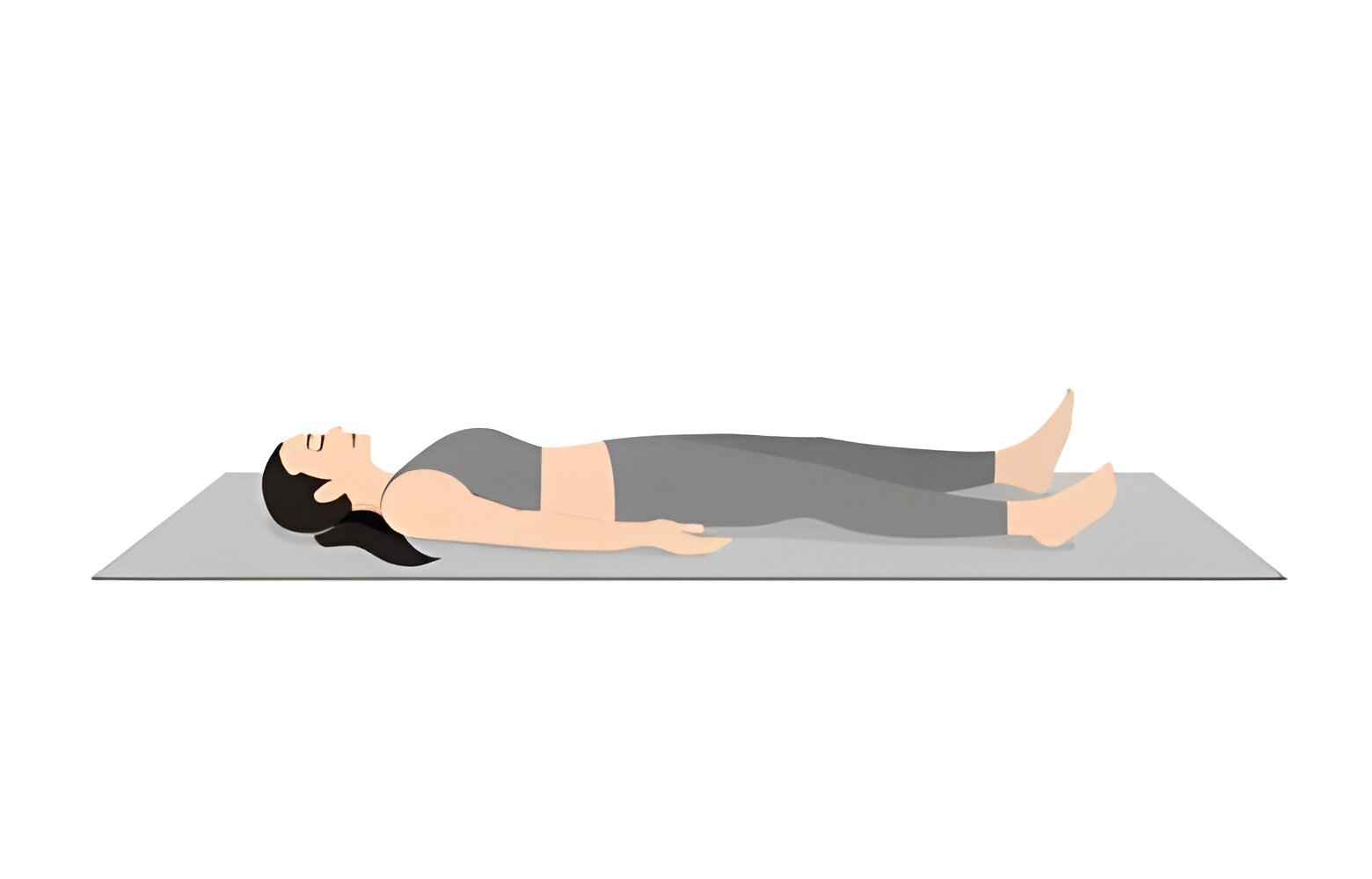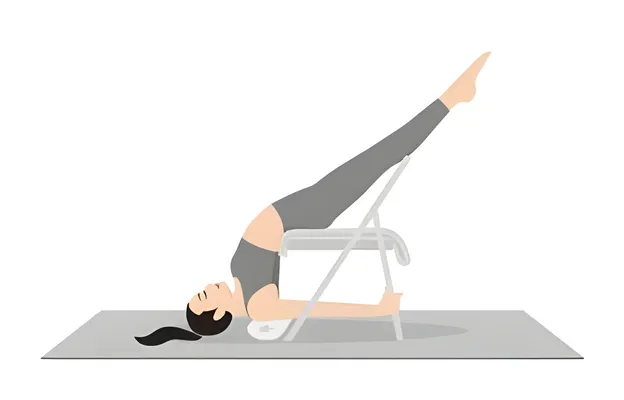Introduction
Peace and relaxation can seem like a luxury in today’s hectic environment. Finding time for self-care and rejuvenation is crucial in daily living. The mild but powerful practice of restorative yoga helps relax and relieve stress. This article explores six restorative yoga positions that promote deep relaxation and reduce stress. These positions provide a peaceful escape from the chaos, whether you’re a beginner or an experienced yogi. This guide will show 6 Restorative Yoga Poses and their performing tips and tricks.
What is Restorative Yoga?
Restorative yoga is a gentle, therapeutic approach to relaxation, renewal, and deep rest. This relaxation and restorative exercise uses blankets, bolsters, and blocks for passive stretching and resting poses. Restorative yoga encourages practitioners to release tension, calm the mind, and submit to deep relaxation to improve physical, mental, and emotional relaxation. Restorative yoga promotes peace, balance, and well-being via attentive breathing and awareness.
How it differs from Other Styles of Yoga:
Unlike vinyasa or vigorous yoga, restorative yoga emphasizes long, passive, supported positions. It stresses relaxation and surrender to relieve muscle strain and mental stress. Since it emphasizes rest and regeneration rather than strength, flexibility, or cardiovascular conditioning, restorative yoga is suitable for all ages, fitness levels, and abilities.
Overview of 6 Restorative Yoga Poses
- Legs-Up-the-Wall Pose (Viparita Karani)
- Corpse Pose (Savasana)
- Supported Bridge Pose (Setu Bandhasana)
- Supported Shoulder Stand (Salamba Sarvangasana)
- Supported Fish Pose (Matsyasana)
- Child’s Pose Variation with Blocks (Balasana)
Let’s Define given Restorative Yoga Poses
1. Legs-Up-the-Wall Pose (Viparita Karani)
Legs-up-the-wall Pose is a healing pose that can help you relax, improve circulation, and feel less stressed. Adding this Pose to your regular restorative yoga routine can help improve your health and make your body and mind feel better.
Benefits:
- Elevating the legs above the heart increases blood flow and reduces leg and foot edema, relaxing and lowering fatigue.
- Stress relief: This position gradually stretches the hamstrings and lower back, relieving sitting or standing stress.
- The legs-up-the-wall position promotes the parasympathetic nervous system, relaxing and lowering tension and anxiety.
How to Perform the Pose:
- Sit sideways with your hip against a wall.
- Lay back on the floor and swing your legs up against the wall, keeping your buttocks close.
- Relax your shoulders away from your ears and extend your arms to the sides, palms up.
- Relax your body and yield to gravity by closing your eyes and focusing on your breath.
- Stay in the stance for 5-10 minutes, breathing deeply and evenly.

Tips for Beginners:
- Use props: Support your hips with a folded blanket or bolster.
- Try varied distances from the wall to find your most comfortable position.
- Start with shorter holds: If you’re new to the stance, start with 2–3 minutes and progress as you get comfortable.
2. Corpse Pose (Savasana)
Corpse pose is one of the most basic and deeply relaxing poses in yoga. It is also a great way to end a practice. People who do Savasana can feel deeply relaxed, at peace with themselves, and like they can start over by accepting the stillness and surrender of the Pose.
Benefits:
- Deep relaxation: Savasana completely relaxes the body and psyche.
- Savasana reduces stress and anxiety through mindful relaxation and deep breathing.
- Integration: Corpse posture helps the body integrate and balance the advantages of the previous yoga session.
How to Perform the Pose:
- Lay flat on your back with your legs extended and arms beside your body, palms up.
- Gently close your eyes and let your feet fall open.
- Relax your body from toe to head.
- Release muscle tension and focus on your breath, ignoring thoughts and distractions.
- Give yourself over to Savasana for 5-10 minutes or more.

Tips for Beginners:
- Use props: Support your lower back with a bolster or blanket under your knees to relieve pain.
- Focus on breath awareness: Let your breath’s natural rhythm guide you into profound relaxation.
- Let go of expectations: Relax and be present without judgments about the exercise.
3. Supported Bridge Pose (Setu Bandhasana)
Supported Bridge Pose is an easy but effective way to relax, release stress, and boost your body and mind. Adding this relaxing Pose to your yoga routine can help you become more flexible, keep your emotions in check, and feel better overall.
Benefits:
- When you do a Supported Bridge Pose, you slowly stretch your spine, shoulders, and chest. This makes your back more flexible and mobile.
- Relaxes: This Pose helps relax the lower back, hips, and legs, which can be painful after sitting or standing for a long time.
- Relaxes the nervous system: Setu Bandhasana relaxes the mind and nerves, which makes you feel less stressed, anxious, and tired.
How to Perform the Pose:
- Start with lying on your back with knees bent, feet hip-width apart, and heels near your buttocks.
- Set a yoga block or bolster under your sacrum (the flat bone at the base of your spine) at a comfortable height.
- Lift your hips off the floor and press your feet into the mat to support your lower back using a block or bolster.
- Interlace your fingers and roll your shoulders under, squeezing your arms and elbows into the ground.
- Keep your neck relaxed and stare softly at the ceiling while breathing evenly.
Tips for Beginners:
- Start low: Use a low-height block or bolster to ease into the posture, adding height as you get comfortable.
- Maintain alignment: Place your knees over your ankles and your feet parallel and apart.
- Core engagement: Engage your abdominal muscles to stabilize your lower back and stance.
4. Supported Shoulder Stand (Salamba Sarvangasana)
A supported Shoulder Stand is a relaxing posture that is good for the body and the mind in many ways. Regularly and correctly aligning this soothing Pose can improve circulation, lower stress, and feel better overall.
Benefits:
- Improved circulation: Supported Shoulder Stand increases brain and thyroid gland blood flow and oxygenation.
- Tension reduction: This position tranquillizes the nervous system and decreases tension and anxiety.
- Thyroid stimulation: Salamba Sarvangasana affects metabolism and hormones by stimulating the thyroid.
How to Perform the Pose:
- Lay flat on your back with your arms alongside you and palms down.
- Bend your knees and draw them to your chest, then elevate your hips and support your lower back with your hands.
- Inhale and raise your legs straight and perpendicular to the floor toward the ceiling.
- Press your elbows and upper arms into the mat to form a straight line from shoulders to feet as you raise your hips.
- Keep your core engaged and gaze at your toes while breathing evenly.
Tips for Beginners:
- Support your shoulders with a folded blanket or yoga bolster.
- If you’re new to Shoulder Stand, start with Half Shoulder Stand (Ardha Sarvangasana) with your legs against a wall.
- Maintain alignment: Keep your neck long and relaxed to avoid cervical spine tension.
5. Supported Fish Pose (Matsyasana)
Your chest and shoulders are gently stretched and healed in Supported Fish Pose. This helps your heart center relax and open up. If you do this pose daily and with awareness, you can become more flexible, feel less stressed, and have better overall health.
Benefits:
- Supported Fish Pose softly extends the chest, shoulders, and throat, relieving tension and opening the heart center.
- Relaxes the upper body: This Pose relieves neck, shoulder, and upper back strain and stress.
- Matsyasana stimulates the thyroid gland, which regulates metabolism and energy, fostering balance and vitality.
How to Perform the Pose:
- Start by arranging a yoga bolster or folded blanket lengthwise on your mat.
- Sit with your knees bent and feet flat on the floor, then lie back on the bolster with your tailbone to head supported.
- Choose a straight or bent leg position for your lower back.
- Rest your arms beside your body with palms up, or extend them in a T-shape to stretch farther.
- Try closing your eyes and relaxing your body to let the bolster open your chest and heart region.

Tips for Beginners:
- Start low: Use a low-height bolster or folded blanket to ease into the posture, increasing the height as your flexibility improves.
- Adjust leg positioning: If your lower back or hips hurt, bend your knees or put a bolster beneath them.
- Use necessary props: Additional blankets or pillows beneath your head, neck, or shoulders provide support and comfort.
6. Child’s Pose Variation with Blocks (Balasana)
Child’s Pose Variation with Blocks is a genuinely healing pose for the spine, shoulders, and hips that help the body and mind relax and refresh. If you do this pose daily and with awareness, you can become more flexible, feel less stressed, and have better overall health.
Benefits:
- This variant of Child’s Pose gently stretches the spine, relieving back and neck strain.
- Shoulders and hips relax: Balasana with blocks supports and restores the shoulders, hips, and thighs, releasing stiffness.
- Child’s Pose’s forward fold stimulates contemplation and relaxation, soothing the mind and lowering tension and anxiety.
How to Perform the Pose:
- Start with two stacked yoga blocks on top of your mat.
- Kneel on the mat with your big toes touching and your knees wide apart, allowing your torso to fit.
- Adjust the blocks’ height to your comfort and sit back on your heels with your forehead on the top block.
- Extend your arms forward on the mat with palms down or alongside your body up for more profound relaxation.
- Relax your body and succumb to the obstacles by closing your eyes and focusing on your breath.

Tips for Beginners:
- If the blocks are too high or unpleasant, use blankets or cushions to lower the height and add padding.
- Place a folded blanket or bolster between your thighs and calves to support your knees or hips if they hurt.
- Take it slow: Learn the Pose slowly and modify it to your body to feel supported and comfortable.
Conclusion
Restorative yoga poses have many physical and mental advantages. Gentle stretches and supported postures help practitioners relax, de-stress, and rejuvenate. Each Pose in this overview has unique benefits, from expanding the chest and shoulders to relaxing the nervous system and aligning the spine.
As a novice or experienced yogi, including these restorative poses in your practice can improve your well-being and life balance. Be attentive to your body and adapt to ensure comfort and safety in each Pose. Restorative yoga can help you relax, heal, and find serenity with regular practice.




